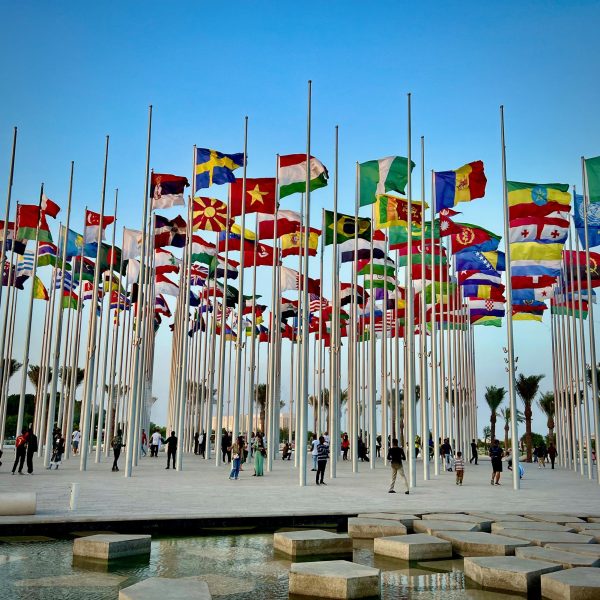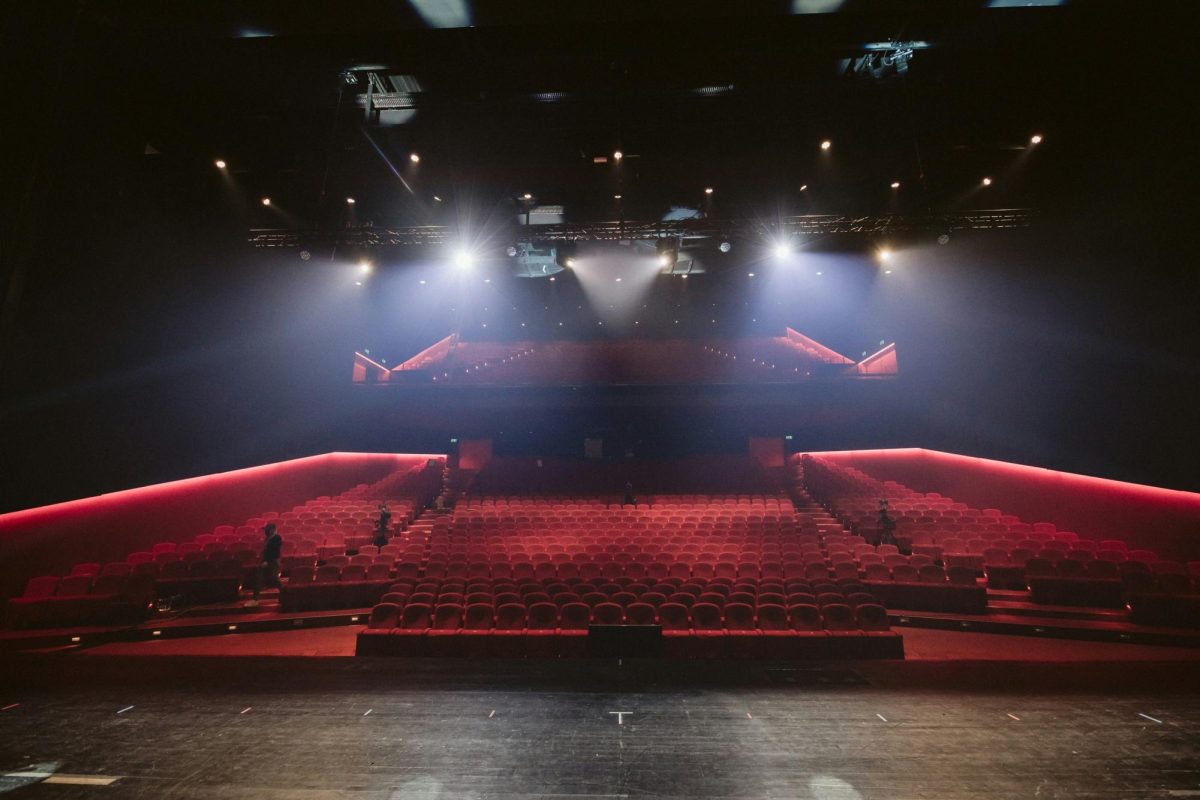
As typical of most Sundays in Germany, it’s a quiet, peaceful one, full of the sound of birds chirping and the rustling of the wind in tree leaves. Yet in Oberursel, tucked among the trees, music and laughter rings through the air. The sweet and savory scents wafting through the air are reminiscent of kitchens from all throughout the world, each with a language, attire, and flag to match.
These flags are showcased at the very beginning of Worldfest, a festival celebrating the cultural diversity of the FIS community, during the flag parade that marks the start of the festivities. It’s the most iconic part of the event, with flag-bearers from countries all around the world. The bearer carries the country’s flag up the Boulevard, flanked by representatives from their countries, decked out in traditional clothing. The flags proudly wave through the air as the procession moves through the school, up to the Lower Field.
After the last few countries disperse into the crowd, Worldfest gets into full swing. Chatter and music erupt around the school, scents billowing from the different stands. Each visitor has a set of tickets, which they can then spend on trying different items from said stands. And there are a lot of different items to choose from: one can be found trying empanadas from Argentina, gelato from Italy, or boba tea from Taiwan. Yet it’s not only food that you can purchase, but other things as well, like having your hand done with a henna tattoo, a temporary tattoo that’s traditional to India.
And while some visitors are trying new foods or having henna done, others watch the performances in the amphitheater. Performances are broadcast over the loudspeakers, so the entirety of the school can listen as students show off their talents, whether that be playing an instrument, dancing, singing, or even deejaying.
Nonetheless, trying new foods is one of the most unique aspects of Worldfest, one that students certainly take advantage of.
“I really liked the bubble tea stand at Taiwan,” Lilah expressed. “I got it twice!” Lilah is a tenth grader at FIS, having come from France but also having lived in China and Belgium. This year, she represented France in the flag parade, and also worked at the French booth for a period of time.
Laura, another tenth grader, preferred the noodles from the Chinese stand. “That was one of my favorites,” she described. Laura is from Italy, and also volunteered at the booth of her home country, but, like Lilah, didn’t spend so much time there as she did hanging out with her friends and exploring the festival. “[Worldfest] is a really fun way to learn about new cuisines and at the same time, hang out with your friends,” Laura explained.
Sure enough, most of the crowd is groups of friends or family walking together, trying out new foods and experiencing cultures they perhaps wouldn’t have before, which, really, is the true importance of the festival.
“[At Worldfest] everyone’s sharing their culture and getting to try food from everywhere around the world,” Lilah conveys. “I think it’s good for everyone to share their culture and show their different identities.”
“The fact that there are so many different cultures in this school – that’s what makes [Worldfest] stand out,” Laura agreed.
For at the end of the day, that’s what sticks with you – the wonder at seeing so many different cultures and nationalities expressed in one area, the wonder that despite everything else going on in the world, despite these countries being seperated by kilometers of land and sea, and despite that most of the people around you are complete strangers, we can still come together as a community to share the wonderful aspects of our differences, and share our joy in our collective humanity.
For when we can realize that, that’s when we can appreciate the true beauty of our world.





